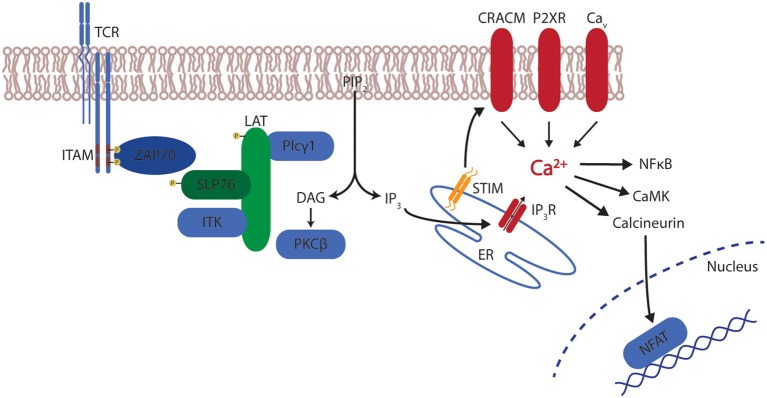Figure 1.
T cell receptor signaling and calcium. After stimulation of the T cell receptor (TCR), the signal is relayed via immunoreceptor tyrosine-based activation motifs (ITAM) leading to the recruitment of zeta-activated protein 70 (ZAP70) and the phosphorylation of linker for activation of T cells (LAT). LAT recruits SH2-domain containing leucocyte protein of 76 kDa (SLP-76) which activates Interleukin-2 inducible tyrosine kinase (ITK). Subsequently, phospholipase C gamma 1 (PLC-γ1) creates diacylglycerol (DAG) and inositol triphosphate (IP3) by cleaving phosphatidylinositol triphosphate (PIP2). DAG activates protein kinase C (PKC), IP3 stimulates a calcium release from the endoplasmic reticulum (ER) via the IP3 receptor (IP3R). This calcium release induces the interaction of stromal interaction molecule 1 (STIM1) with CRAC modulator 1 (CRACM1). In addition membrane-bound channels from the transient receptor potential (TRP) family, P2X receptors or voltage-gated calcium-channels (Cav) contribute to calcium mobilization. The resulting calcium elevation activates several signaling proteins such as calcineurin and its target nuclear factor of activated T cells (NFAT), nuclear factor κB (NFκB) or the Ca+2 calmodulin-dependent kinase (CaMK).

